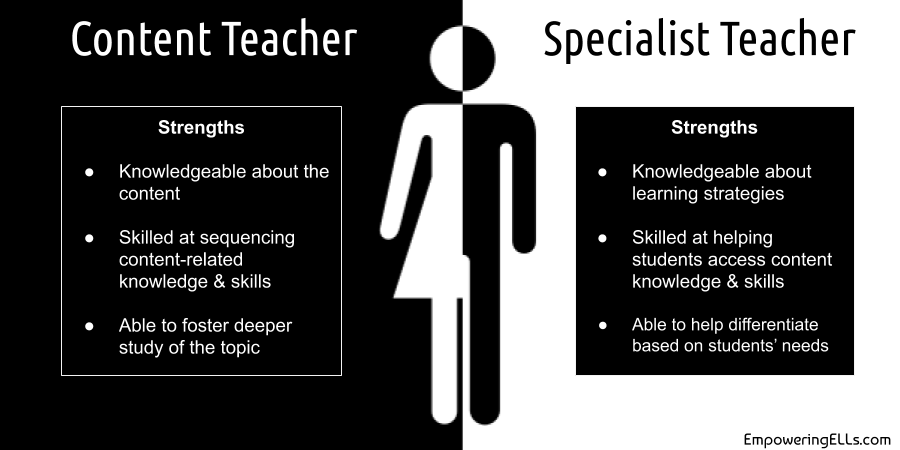In the 2018 Winter Olympics, the USA team sent 244 athletes to compete in skiing, figure skating, and hockey to name a few. Regardless of the sport, all of the athletes held one singular goal: to win medals for Team USA.
The Olympics is a suitable analogy for co-teaching because each athlete contributes their own strengths to the team. For example, alpine skier, Bruce Bynett, is more valuable to the American team by competing in the skiing competition than joining the curling team. Likewise, the best co-teaching arrangement occurs when teachers draw from their own expertise .
When I collaborate with content teachers, I offer ways to scaffold the language and identify opportunities for differentiation. The content teacher focuses on what content to teach and thinks about how best to sequence the learning experiences. In this arrangement, we each contribute to students’ learning from our own area of expertise.
A strength-based approach to co-teaching is highly effective arrangement because:
- Each teacher can tailor the instruction they’re best at to meet different learners
- students receive both content-related and academic language support
- small-group instruction can be based on content or academic language
When I work with a middle school science teacher, she focuses on teaching students how to design a lab experiment, how to gather data, and how to interpret the results. Then I’m tagged in to help students describe the lab experiment and communicate their findings using language suitable for science. As we co-teach, she guides students in collecting and analyzing data while I help them communicate their ideas. In this arrangement, the students master content skills while developing academic language. It is the best of both worlds for students and the teachers alike.
Co-teaching is less about what or how to teach; it’s more about what strengths we utilize . In playing to our strengths, collaborating from our areas of expertise, we give children more than one teacher alone can provide. It is an honor to have written for Larry.
*This article was originally published on Larry Ferlazzo’s blog on Education Week.


